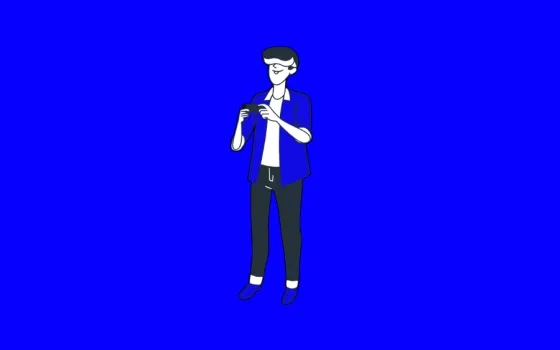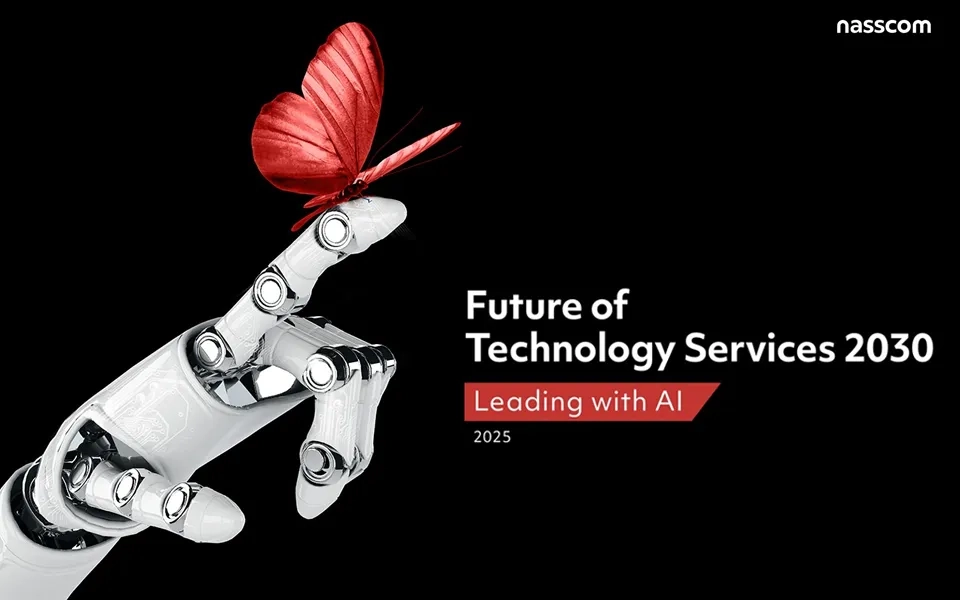Augmented reality (AR) is changing the way we interact with the world. This technology blends digital elements with our real environment, creating unique and immersive experiences.
AR is not just for gaming and entertainment. It's being used in many industries to solve real problems. Businesses are using AR to enhance their services and make their products stand out. From healthcare to retail, AR is making a big impact. It’s helping companies improve customer experiences, streamline operations, and boost engagement.
In this article, we’ll explore how different industries use augmented reality to improve their services and products. Let’s dive into the fascinating world of augmented reality.
Augmented Reality in Retail: Enhancing Shopping Experiences
Retail is one of the industries that has embraced augmented reality quickly. AR is changing how we shop by making the experience more interactive and fun.
Imagine trying on clothes without stepping into a fitting room. Virtual fitting rooms let you see how clothes look on you using your phone or a smart mirror. This saves time and makes shopping more convenient.
Furniture shopping is easier too. AR apps allow you to visualize how a piece of furniture will look in your home. You can see if it fits and matches your decor before you buy it.
Product demonstrations are more engaging with AR. You can scan a product with your phone to see tutorials and additional features. This helps you make better buying decisions.
In retail, augmented reality is making shopping more personalized and enjoyable. It’s a powerful tool that retailers use to attract and retain customers.
Augmented Reality in Retail: Enhancing Shopping Experiences
Augmented Reality in Retail is the industries that has embraced augmented reality quickly. AR is changing how we shop by making the experience more interactive and fun.
Imagine trying on clothes without stepping into a fitting room. Virtual fitting rooms let you see how clothes look on you using your phone or a smart mirror. This saves time and makes shopping more convenient.
Furniture shopping is easier too. AR apps allow you to visualize how a piece of furniture will look in your home. You can see if it fits and matches your decor before you buy it.
Product demonstrations are more engaging with AR. You can scan a product with your phone to see tutorials and additional features. This helps you make better buying decisions.
For example, IKEA's AR app, IKEA Place, lets you place true-to-scale 3D models of furniture in your home. This app helps customers see how products will fit and look in their space, making the buying process easier and more confident.
In retail, augmented reality is making shopping more personalized and enjoyable. It’s a powerful tool that retailers use to attract and retain customers.
Augmented Reality in Education: Making Learning Fun and Engaging
Education is another field where augmented reality is making a big impact. AR is transforming traditional learning methods, making education more interactive and engaging.
AR apps can turn ordinary textbooks into interactive experiences. Students can scan textbook pages with their phones to see 3D models, videos, and animations. This makes learning more dynamic and helps students understand complex topics better.
Virtual field trips are possible with AR. Students can explore historical sites, museums, and even outer space right from their classroom. This makes learning more exciting and broadens their understanding of the world.
Science experiments and lab simulations are enhanced with AR. Students can perform virtual experiments and see the results in real-time. This is especially useful for schools with limited resources.
For example, the app "Quiver" brings coloring pages to life. Students can color a picture and then use the app to see their artwork come alive in 3D. This makes learning about art and science fun and interactive.
Augmented reality in education is making learning more accessible and enjoyable. It’s a powerful tool that educators use to inspire and engage students.
Augmented Reality in Healthcare: Improving Patient Care
Healthcare is benefiting greatly from augmented reality. AR is helping doctors and patients in many ways, making treatments more effective and easier to understand.
Surgeons use AR for planning and navigation during surgeries. They can overlay 3D images of organs and tissues on a patient’s body. This helps them perform precise and less invasive procedures.
Patients can learn about their conditions through AR. Doctors can show 3D models of body parts to explain illnesses and treatments. This makes medical information clearer and less scary for patients.
Physical therapy and rehabilitation are improved with AR. Patients can use AR apps to follow exercise routines at home. The apps guide them through each step, ensuring they do the exercises correctly.
For example, the app "AccuVein" helps nurses and doctors find veins easily. It uses AR to project a map of the veins onto the skin. This makes drawing blood or inserting IVs quicker and less painful.
Augmented reality in healthcare is making patient care better and more efficient. It’s a powerful tool that medical professionals use to enhance treatment and education.
Augmented Reality in Real Estate: Visualizing Properties
Real estate is another industry where augmented reality is making a big difference. AR helps buyers and sellers by providing a better way to view and understand properties.
Virtual property tours are a great use of AR. Potential buyers can walk through a house or apartment without being there. This saves time and allows them to view multiple properties from their own home.
Interior design is easier with AR apps. Buyers can see how different furniture and decor will look in a space. They can experiment with colors, layouts, and styles before making any decisions.
Architects and builders use AR to enhance their visualizations. They can show clients 3D models of buildings and how they will look in the real world. This makes it easier to communicate ideas and make changes before construction starts.
For example, the app "MagicPlan" allows users to create floor plans by simply taking pictures. This helps real estate agents and buyers quickly understand the layout and dimensions of a property.
Augmented reality in real estate is making the buying and selling process smoother and more informative. It’s a powerful tool that professionals use to showcase properties and make better decisions.
Augmented Reality in Manufacturing: Streamlining Production Processes
Manufacturing is seeing significant improvements with the help of augmented reality. AR is making production processes more efficient and safe.
AR is useful for equipment maintenance and repair. Technicians can use AR glasses to see detailed instructions and diagrams overlaid on the machinery. This helps them fix problems faster and more accurately.
Training workers is easier with AR in warehouse. New employees can use AR to learn how to operate machines and perform tasks. This interactive training is more effective and engaging than traditional methods.
AR also helps in optimizing assembly lines. Workers can see step-by-step instructions and real-time data as they work. This reduces errors and speeds up the production process.
For example, Boeing uses AR to help workers assemble complex aircraft components. The AR system shows them exactly where each part goes, improving accuracy and efficiency.
Augmented reality in manufacturing is enhancing productivity and safety. It’s a powerful tool that companies use to improve their operations and reduce downtime.
Augmented Reality in Tourism: Enhancing Travel Experiences
Tourism is another industry that benefits from augmented reality. AR is making travel more informative and fun for tourists.
AR-guided tours are a great use of this technology. Tourists can use AR apps to learn about historical sites and landmarks. By pointing their phones at a location, they can see information, images, and videos.
Interactive maps are also enhanced with AR. Travelers can use AR to navigate new cities and find interesting places. This makes exploring easier and more enjoyable.
Museums use AR to create engaging exhibits. Visitors can scan artifacts to see 3D models and animations. This provides a deeper understanding of the exhibits and their history.
For example, the app "CityMaps2Go" offers AR features that help tourists discover attractions and learn about their surroundings. It adds a layer of information to the real world, making sightseeing more interactive.
Augmented reality in tourism is enriching travel experiences. It’s a powerful tool that enhances learning and exploration for tourists around the world.
Augmented Reality in Automotive: Transforming the Driving Experience
The automotive industry is using augmented reality to enhance the driving experience. AR is making cars safer and more enjoyable to drive.
AR heads-up displays are becoming popular in modern vehicles. These displays project important information, like speed and navigation, onto the windshield. Drivers can keep their eyes on the road while getting the info they need.
Car maintenance is easier with AR. Mechanics can use AR glasses to see detailed repair instructions overlaid on the car. This helps them perform repairs more efficiently and accurately.
Driver assistance systems are improved with AR. These systems can highlight potential hazards and provide real-time guidance. This makes driving safer and helps prevent accidents.
For example, the app "Bosch AR" offers augmented reality features for car maintenance. It shows mechanics where parts are located and how to repair them, making the process faster and easier.
Augmented reality in automotive is revolutionizing the way we drive and maintain vehicles. It’s a powerful tool that enhances safety and convenience for drivers and mechanics alike.
Augmented Reality in Entertainment: Creating Immersive Experiences
The entertainment industry is using augmented reality to create exciting and immersive experiences. AR is changing how we enjoy games, movies, and events.
In video games, AR brings virtual elements into the real world. Players can see and interact with game characters and objects in their environment. This makes gaming more engaging and fun.
Live events are also enhanced with AR. Concerts, sports events, and theater performances use AR to provide additional content. Fans can use AR apps to see special effects, statistics, and backstage footage.
Movie promotions use AR to attract audiences. Posters and advertisements come to life when viewed through an AR app. This interactive content makes marketing more appealing.
For example, the app "Pokémon GO" uses AR to place virtual creatures in the real world. Players can find and catch Pokémon in their surroundings, blending gaming with reality.
Augmented reality in entertainment is creating unique and memorable experiences. It’s a powerful tool that keeps audiences engaged and entertained.
Augmented Reality in Military: Training and Operations
The military is using augmented reality to improve training and operations. AR provides soldiers with advanced tools to enhance their skills and performance.
AR is valuable for soldier training. It creates realistic simulations of combat scenarios. Soldiers can practice tactics and decision-making in a safe environment.
In actual operations, AR helps with situational awareness. Soldiers can see real-time information about their surroundings. This includes maps, enemy locations, and mission objectives.
Equipment maintenance is also improved with AR. Technicians can use AR glasses to see repair instructions overlaid on the equipment. This makes repairs quicker and more accurate.
For example, the app "Tactical Augmented Reality" (TAR) system provides soldiers with an AR headset that displays crucial data. It enhances their vision and awareness on the battlefield.
Augmented reality in the military is enhancing training and operational effectiveness. It’s a powerful tool that helps soldiers perform better and stay safer.
Augmented Reality in Agriculture: Modernizing Farming Techniques
Agriculture is benefiting from augmented reality in many ways. AR is helping farmers improve their practices and increase productivity.
AR is useful for crop monitoring. Farmers can use AR apps to see detailed information about their fields. This includes data on soil health, crop growth, and pest infestations.
Training farmers is easier with AR. They can use AR simulations to learn new techniques and equipment operations. This hands-on learning is more effective than traditional methods.
Equipment maintenance is enhanced with AR. Farmers can use AR glasses to see repair instructions overlaid on their machinery. This makes fixing equipment faster and more accurate.
For example, the app "AgriTech AR" helps farmers visualize crop data and field conditions. It provides real-time insights that assist in making better farming decisions.
Augmented reality in agriculture is modernizing farming techniques. It’s a powerful tool that helps farmers manage their fields more efficiently and effectively.
Augmented Reality in Sports: Enhancing Training and Fan Engagement
Sports is another industry where augmented reality is making a big impact. AR is enhancing both athlete training and fan engagement.
AR helps athletes improve their skills. Training apps use AR to provide real-time feedback on performance. Athletes can see how to adjust their movements to improve their techniques.
Fan engagement is boosted with AR. Sports events use AR to provide interactive experiences. Fans can access player stats, replays, and live updates through AR apps.
Stadiums are using AR to enhance the spectator experience. Fans can use AR to navigate the stadium, find their seats, and see game highlights. This makes attending live events more enjoyable.
For example, the app "AR Sports" allows fans to point their phones at the field and see player information and game statistics in real time. This adds a new layer of excitement to watching sports.
Augmented reality in sports is revolutionizing training and fan interaction. It’s a powerful tool that makes sports more engaging and enjoyable for everyone.
Augmented Reality in Marketing: Creating Interactive Campaigns
Marketing is seeing a transformation with augmented reality. AR is helping brands create interactive and memorable campaigns.
AR makes advertisements more engaging. Companies can use AR to bring print ads, billboards, and packaging to life. Customers can scan these with their phones to see animations, videos, and special offers.
Product demonstrations are enhanced with AR. Customers can see how a product works in a real-world setting. This helps them understand the product better and makes them more likely to buy it.
Events and promotions use AR to attract attention. Brands can set up AR experiences at trade shows and public places. This draws crowds and creates buzz around their products.
For example, the app "IKEA Place" lets users see how furniture will look in their homes. This AR feature helps customers make informed purchasing decisions.
Augmented reality in marketing is creating unique and interactive campaigns. It’s a powerful tool that helps brands connect with their audience in innovative ways.
Augmented Reality in Fashion: Revolutionizing the Industry
The fashion industry is using augmented reality to transform shopping and design experiences. AR is making fashion more accessible and exciting for everyone.
Virtual fitting rooms are a key use of AR in fashion. Shoppers can try on clothes virtually using their phones or in-store smart mirrors. This helps them see how outfits look without physically trying them on.
Fashion shows and events are enhanced with AR. Designers use AR to create interactive runway shows. Audiences can see additional information about the outfits and even purchase them in real time.
AR helps in designing clothes as well. Designers can use AR to visualize and adjust their creations in 3D before making physical samples. This saves time and resources in the design process.
For example, the app "Zara AR" lets customers see models wearing Zara’s latest collection in augmented reality. By pointing their phones at special AR markers in stores, they can see the clothes in action.
Augmented reality in fashion is revolutionizing how we shop and design. It’s a powerful tool that makes the fashion industry more innovative and customer-friendly.
Augmented Reality in Interior Design: Visualizing Home Decor
The interior design industry is benefiting greatly from augmented reality. AR is helping designers and homeowners visualize and plan home decor more effectively.
AR apps allow users to see how furniture and decor will look in their space. By using their phones or tablets, they can place virtual items in a room. This helps them decide what fits and looks best before making a purchase.
Interior designers use AR to present their ideas to clients. They can create 3D models of their designs and show clients how different elements will come together. This makes it easier for clients to understand and approve designs.
AR also helps with color and material selection. Users can see how different paint colors, fabrics, and finishes will look in their homes. This reduces the guesswork and helps make confident decisions.
For example, the app "Houzz" offers an AR feature that lets users place 3D models of furniture in their rooms. This helps them visualize how products will fit and look in their space.
Augmented reality in interior design is making home decor planning more accurate and enjoyable. It’s a powerful tool that enhances creativity and decision-making.
Augmented Reality in Construction: Improving Project Efficiency
The construction industry is using augmented reality to improve project efficiency and accuracy. AR is helping builders and architects visualize and plan their projects better.
AR allows for detailed project visualization. Builders can overlay 3D models of buildings onto real construction sites. This helps them see how the final structure will look and fit in its environment.
AR is useful for site inspections. Inspectors can use AR to compare the current progress with the original plans. This helps identify any discrepancies and ensure the project stays on track.
Training workers is enhanced with AR. Construction workers can use AR simulations to learn new techniques and safety procedures. This hands-on training is more effective and reduces the risk of accidents.
For example, the app "DAQRI Worksense" uses AR to provide real-time instructions and safety information on construction sites. Workers can see step-by-step guides and warnings overlaid on their environment.
Augmented reality in construction is improving project efficiency and safety. It’s a powerful tool that helps builders deliver high-quality projects on time.
Conclusion
Augmented reality is transforming many industries, making processes more efficient and experiences more engaging. We've seen how AR is enhancing shopping in retail, making learning fun in education, and improving patient care in healthcare. It's also revolutionizing real estate, streamlining manufacturing, and enriching tourism.
In the automotive world, AR is enhancing the driving experience, while in entertainment, it’s creating immersive experiences. The military is using AR for better training and operations, and agriculture is benefiting from modern farming techniques. AR is also making sports more interactive, marketing more engaging, fashion more innovative, interior design more visual, and construction more efficient.
The future of augmented reality looks bright as more industries discover its potential. As AR technology continues to evolve, we can expect even more exciting applications.
If you're interested in how technology continues to shape our world, consider exploring more about virtual reality and its applications.

















